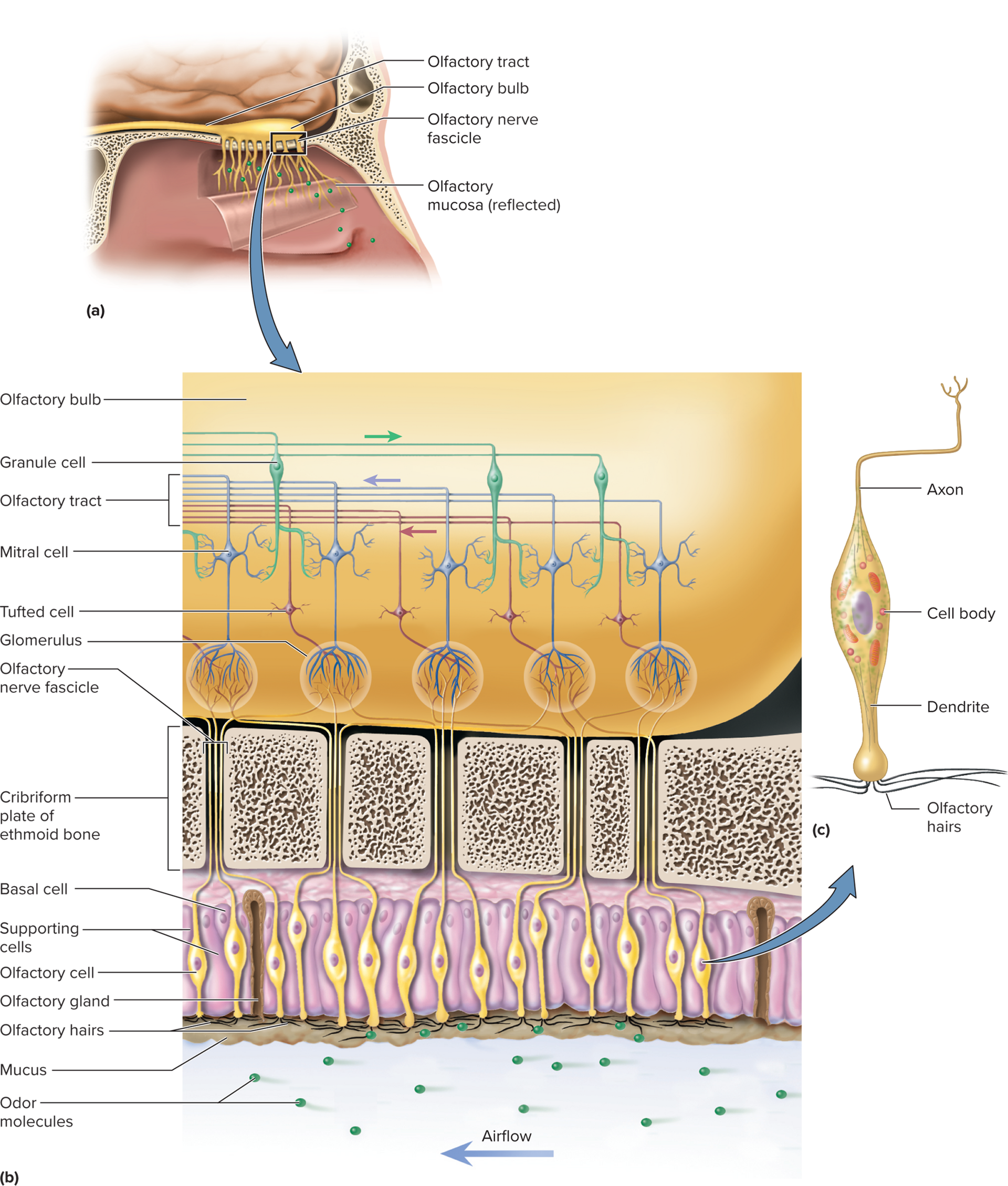olfaction
1/7
Name | Mastery | Learn | Test | Matching | Spaced |
|---|
No study sessions yet.
8 Terms
Olfaction
Sense of smell
Response to airborne chemicals (odorants)
Influence behavior, avoiding hazard, influence mate choice, parent and infant bonding
Ties to memories and emotion
Decreased ability to smell is an early predictor of Alzheimer’s disease
Olfactory dysfunction due to disease or injures is associated with depression
Odors
Detected by receptor cels in patch of epithelium, olfactory mucosa, in the roof of nasal cavity
Roof of nasal cavity: olfactory cells close to the brain
Not well ventilated as lower nasal cavity
Forcible sniffing is needed to identify an order/ locate its source

Olfactory mucosa
Covers 5 cm² of superior concha, cribriform plate, and nasal septum of each nasal fossa
Consists of 10-20 million olfactory cells as well as epithelial supporting cells and basal stem cells
The rest of nasal cavity is lined by nonsensory respiratory mucosa
Contains olfactory receptors
At upper region of nasal cavity
Olfactory tracts
Carry sensory information from olfactory bulbs to primary olfactory cortex
Olfactory cells
Neurons
Spaced like bowling’s pins
Widest part of cell contained nucleus in the cell body
The neck and head are modified dendrite with a swollen tip
The head have 10-20 cilia
Found in olfactory mucosa
Olfactory hairs
The head bears 10-20 cilia
Immobile
Have binding sites for odor molecules
Lie in tangled mass embedded in thin layer of mucus
Basal end of each cells tapers to axon
Axons collect into small fasciles that leave the nasal cavity through pores (cribriform foramina) in ethmoid bone
Fascicles are CN I
Only neurons directly exposed to external environment
Life span of 60 days
Replaceable
Basal cells divide and differentiate into new olfactory cells
Projection pathways
Olfactory cell axon pass through the roof of nose—> olfactory bulbs (beneath the frontal lobes of brain—> synapse with dendrites of neurons (mitral cells and trusted cells)
Olfactory cell axons reach up shear as mitral and tufted cell dendrites reach down to meet each other in spheroidal clusters (glemeruli)

Glomerulus
All olfactory axons lead to one glemerulus come from cells with same receptor type
Each glomerulus dedicated to a particular type of odor
Higher brain interpret complex orders by decoding signals from a combo of odor-specific glemeruli
Similar to the way our visual system decodes all colors of spectrum using inpu of 3 basic color of eye